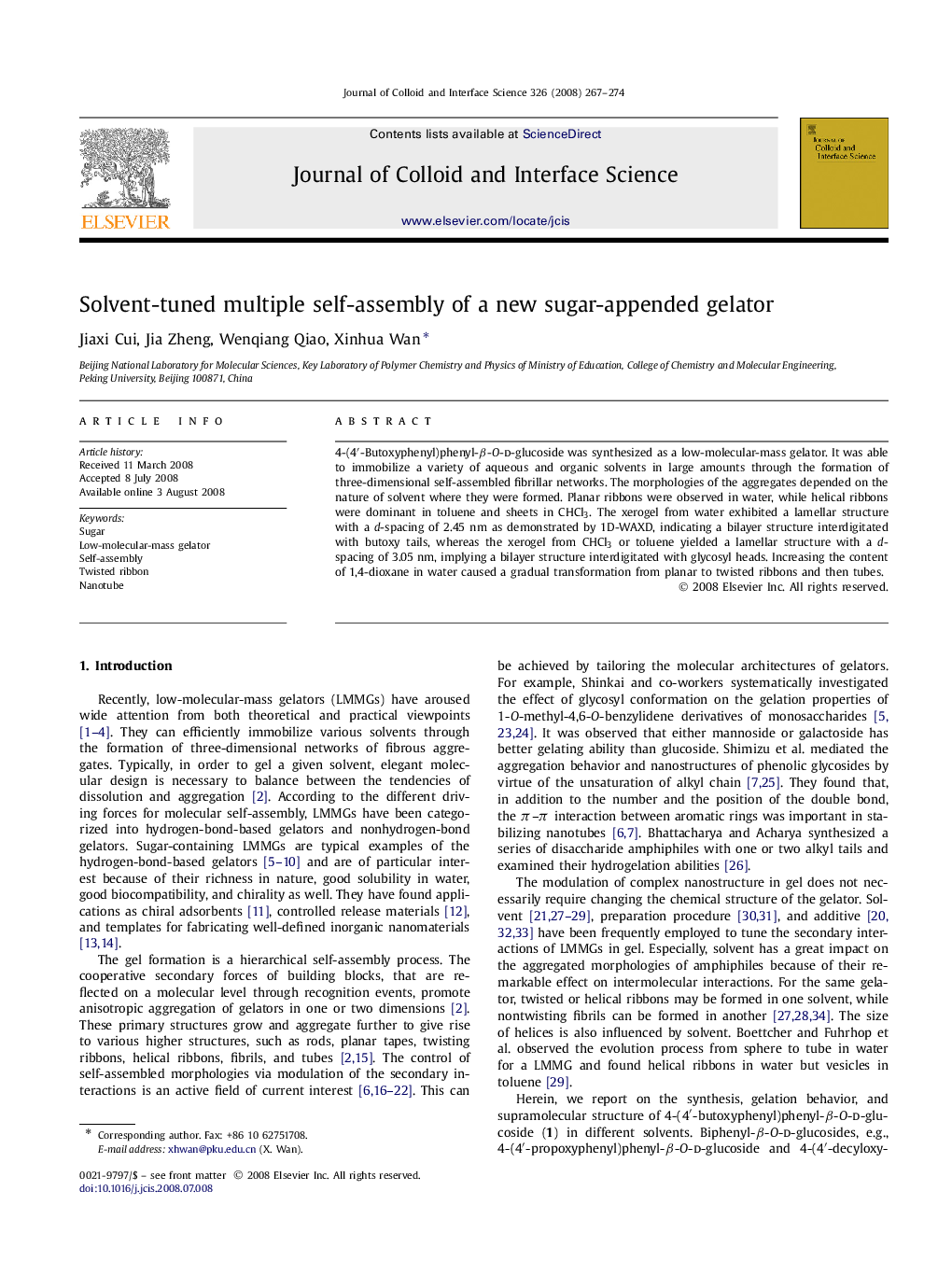| Article ID | Journal | Published Year | Pages | File Type |
|---|---|---|---|---|
| 610900 | Journal of Colloid and Interface Science | 2008 | 8 Pages |
4-(4′-Butoxyphenyl)phenyl-β-O-d-glucoside was synthesized as a low-molecular-mass gelator. It was able to immobilize a variety of aqueous and organic solvents in large amounts through the formation of three-dimensional self-assembled fibrillar networks. The morphologies of the aggregates depended on the nature of solvent where they were formed. Planar ribbons were observed in water, while helical ribbons were dominant in toluene and sheets in CHCl3. The xerogel from water exhibited a lamellar structure with a d-spacing of 2.45 nm as demonstrated by 1D-WAXD, indicating a bilayer structure interdigitated with butoxy tails, whereas the xerogel from CHCl3 or toluene yielded a lamellar structure with a d-spacing of 3.05 nm, implying a bilayer structure interdigitated with glycosyl heads. Increasing the content of 1,4-dioxane in water caused a gradual transformation from planar to twisted ribbons and then tubes.
Graphical abstractFigure optionsDownload full-size imageDownload as PowerPoint slide
